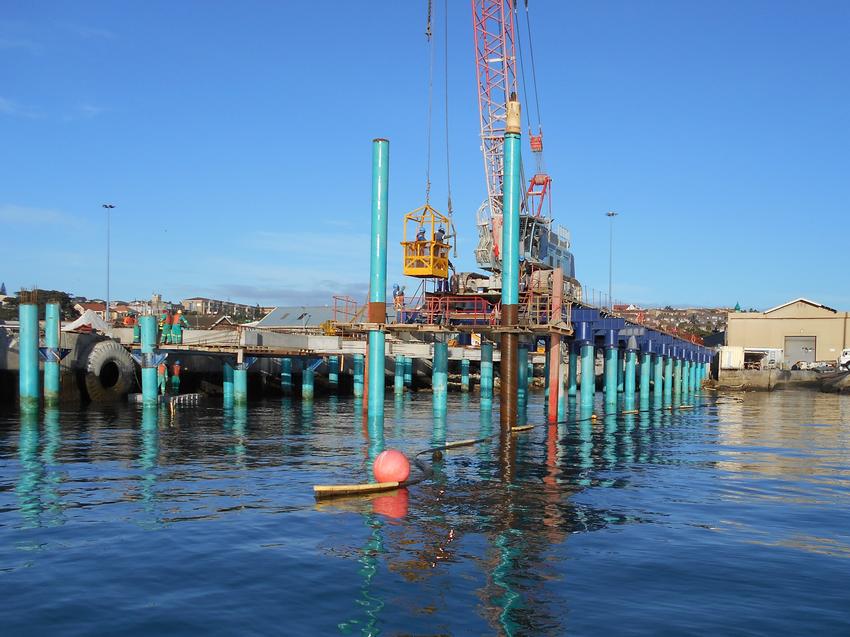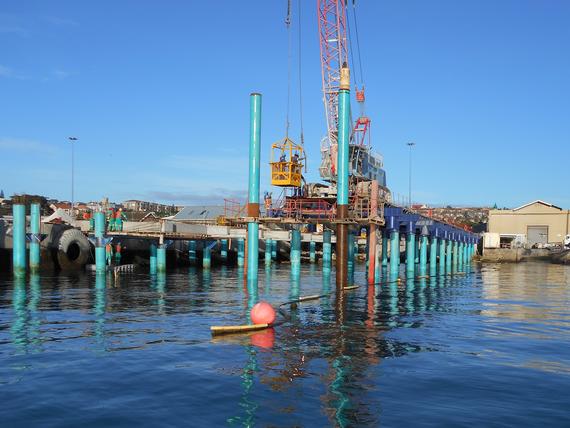Construction of jetties at the Port Elizabeth Harbour, Eastern Cape, South Africa.

The project
This project comprised two components:
- A 40-ton slip converted into a 90-ton boat hoist jetty, consisting of two sets of connecting jetties of 16 bays each.
- Two lead-in jetties for the 1200-ton slipway, consisting of the Northern Jetty (with 30 bays) and the Southern Jetty (with 39 bays).
The challenge
We were concerned with the effects of vibrating through the 4.0m seabed, drilling a 1.5m rock socket and having a crane walking out onto the jetty before the concrete had gained sufficient strength. For this reason we decided to install 610mm diameter piles using the rota pile method as this would be the least risky and would allow quicker access. A geotechnical investigation resulted in totally unexpected results.
The seabed was found to be 3.5m to 6.0m thick, with a boulder layer of 12m to 18m thick before bedrock was encountered. This completely vindicated the decision to opt for the rota piling method.
Another challenge was encountered on the Northern jetty where the cross-bracing between the piles from the original jetty constructed at the end of the 1800s obstructing the position of the piles that had to be installed. A local commercial diving company was appointed to dredge clear the cross-bracing and cut them out at those positions where they would interfere with the new pile positions.
The solution
With the soils information available, we installed the first row of piles 19m deep with a 1.5m socket, just below the high-tide mark, and a 12m test pile with a 6m socket into the boulder layer. The test pile was tested to 3 000kN, twice the working load, and with a 6mm settlement under load. Due to the good results under test load, we proceeded with the pile installation, now only required to be 9m deep below the seabed, with a minimum 3m socket into the boulder layer.
The full scope of works involved 202 no. 610mm diameter rota piles, with 12mm wall thickness steel tubes filled with reinforced concrete.
